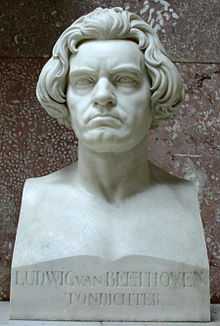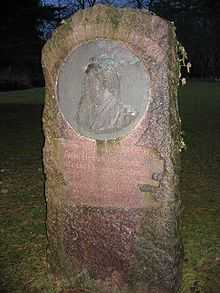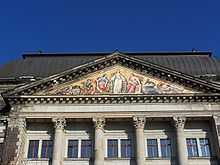Anton Dietrich
Anton Dietrich (born May 27, 1833 in Meissen; died August 4, 1904 in Leipzig) was a German painter.




At 14, Dietrich came to the Dresden Academy of Fine Arts, where he was student of sculptors, including Ernst Julius Hähnel. Despite the political unrest, in 1848 Dietrich made his debut at an exhibition of the Academy with a picture.
That same year he became a student of the painter Eduard Bendemann. Dietrich moved after a short time together with Leonhard Gey in the studio of Julius Schnorr von Carolsfeld. In spite of positive reviews, Dietrich was unable to make a living as a freelance artist, so he supported himself by working as an illustrator for various publishers and art dealers.
Dietrich learned fresco techniques from Karl von Binzer and settled down in Weimar. There Dietrich discovered wall painting, which was henceforth to be a focus in his art. A short time later Dietrich became a master student of Julius Schnorr von Carolsfeld in Dresden. One of his first great works was Rudolf von Habsburg on the corpse Ottokar of Bohemia which was premiered at an exhibition and which earned him an academic travel grant.
Through this generous financial support Dietrich was allowed formative years in Düsseldorf in 1859/60. He is associated with the Düsseldorf school of painting. From there he launched a great trip to Italy, including Venice and Rome, traveling as far as Naples. On his way home he stopped for several weeks stay in Munich and went from there back to Dresden in 1865.
Dietrich founded a studio in Dresden, in which one of the first works of his series on Otto the Great was born. Photographs of these pictures were soon circulated in large quantities. In 1868, Dietrich was commissioned to embellish the Gothic Hall of the Kreuzschule in Dresden with historical frescoes.[1] After four years, in 1872, Dietrich ended this work successfully. Another commission took Dietrich until 1878 to Johanneum after Zittau, where he created the fresco Paul preaches at the Areopagus in Athens. The basis for this work was the book of Acts 17, verses 22-23. Dietrich created the image on the gable of the Saxony Ministry of Finance building built in 1894. It represents Saxonia surrounded by arts and government revenues.
Dietrich took a position at the Hochschule für Grafik und Buchkunst Leipzig (HGB)(Academy of Visual Arts in Leipzig), where he died at the age of 71 years on 4 August 1904.
Selected Works
- Paul preaches at the Areopagus in Athens, auditorium of the Christian-Weise-Gymnasium in Zittau, Saxony
- Rudolf von Habsburg on the corpse Ottokar of Bohemia
- Faust at Gretchen in prison
- Otto the Great (series of images)
- Altar painting Christ in the Sermon on the holding of the destroyed Trinity Church in Dresden
- Henry I, founded in 929, the Meissen, (Fresco, Albrecht Castle, Meissen)
- Dresden Finanzministerium
- Christ Calming the Tempest (which inspired a stained glass window in Stanford Memorial Church)
See also
References
- ↑ The Schools of Modern Art in Germany, J. Beavington Atkinson, 1881
This article is a translation of a public domain text from Meyers encyclopedia, 4th Edition of 1888-1890. Please remove this notice only if you know the article you wrote so far revised or new that the text reflects the current state of knowledge on this subject and this is documented with sources, if the article has met today's language requirements and if it does not include assessments which the Wikipedia principle of the neutral position hurt.